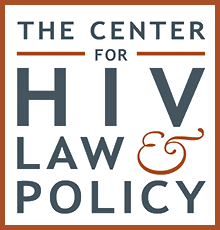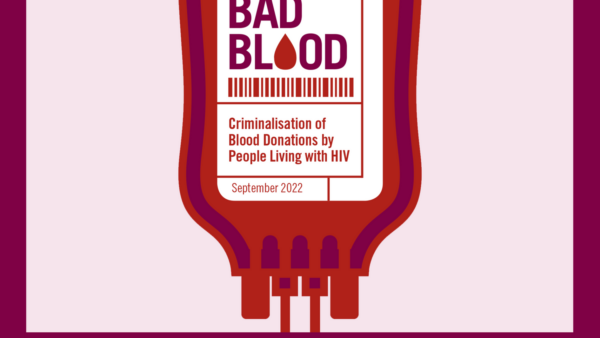Overview
Beginning in 1988, California adopted a number of criminal provisions targeting people living with HIV. These laws governed sexual activity, the donation of blood and other bodily substances, and sex work. Following sustained advocacy from civil society groups, California modernised its HIV laws in 2017.
Prior to reform the law contained felony offences which ostensibly criminalised perceived ‘exposure’ to HIV transmission, while perceived ‘exposure’ to other communicable diseases was categorised only as a misdemeanour offence which carried much lower penalties. Under the Health and Safety Code, people living with HIV could be imprisoned for up to eight years for engaging in unprotected sex without disclosing their HIV status, or for up to six years for donating blood, tissue, semen or breast milk. Additionally, under the Penal Code the HIV status of people previously convicted of ‘soliciting or engaging in prostitution’, determined through mandatory testing upon conviction, could be used against them in criminal proceedings for subsequent charges, resulting in enhanced penalties for people living with HIV. None of these offences required transmission to be proven or to actually occur in order to prosecute.
A large number of cases were prosecuted during the lifetime of these provisions. A 2015 study by the Williams Institute, UCLA, found that from 1988 to 2014, HIV laws had been applied against 800 people, with 33% resulting in criminal charges for HIV-related offences, all of which resulted in conviction. The law overwhelming targeted sex workers; 95% of those effected by the laws during this period were people engaged, or suspected of being engaged, in sex work. Black people, Latinos, and women, particularly transgender women, were all overrepresented in criminal statistics.
Although the number of enforcement incidents peaked between 1995 and 2004 and had since fallen, people living with HIV continued to be liable to prosecution under the law, leading civil society to formally join their efforts to modernise the law. In 2016, Californians for HIV Criminalization Reform, a coalition of organisations and individuals dedicated to ending HIV criminalisation in the state, was established. This intersectional coalition included organisations working to support affected communities including people living with HIV, LGBT people, ethnic minorities, women, sex workers, as well as general legal and human rights organisations.
The coalition worked closely with Senator Scott Wiener to advocate for a series of legal changes. In 2017, the Governor of California signed into law Senate Bill 239, co-authored by Senator Wiener, giving effect to a number of landmark reforms modernising the state law and meeting all of the principles advocated for by the Coalition. The law repealed the provisions which criminalised perceived ‘exposure’, donation of blood and other bodily substances, and sentence enhancements for sex work offences by people living with HIV. All mandatory testing and attendance at HIV education programmes under these provisions were repealed. The law also vacated all convictions under the felony sentence enhancement provision related to engaging in sex work while living with HIV.
In place of the repealed provisions, the law maintained and amended Section 120290 of the Health and Safety Code, which makes it a misdemeanour to ‘intentionally transmit an infectious or communicable disease’. HIV transmission is now only liable to a misdemeanour offence, equal with all other significant communicable diseases. The elements of this offence, which must all be satisfied, are that:
- The defendant knows they or a third party are living with an infectious or communicable disease
- The defendant acts with the ‘specific intent’ to transmit or cause a third party to transmit the disease to another person
- The defendant or third party engages in conduct which poses a ‘substantial risk of transmission’
- The defendant or third party transmits the disease to another
- The affected person did not know the defendant was living with the disease (where transmission occurs through the defendant and not a third party).
This provision carries a maximum penalty of six months’ imprisonment, while unsuccessful attempts to transmit a disease are punishable by 90 days’ imprisonment. The provision includes two specific protections for defendants; it states that an act is not rendered involuntary solely due to a lack of knowledge that the other party was living with a disease, preventing any claim to non-consent to activity where the defendant has not disclosed their HIV or other status. Furthermore, it states that a defendant who takes ‘practical means’ to avoid transmission, including the wearing of a condom and/or undergoing proper medical treatment, is not guilty of intentional transmission, and that failure to take such measures is not itself sufficient to prove the required intent.
This provision is a significant improvement upon the previous HIV law and has been praised for reflecting up-to-date science, as it treats HIV equally to other communicable diseases, requires both actual transmission and a specific intent to transmit, substantially reduces the penalty available, and provides for defences where precautions are taken.
The reforms also introduced the offence of ‘wilful exposure to an infectious or communicable disease’ where a defendant engages in specific conduct that poses a ‘substantial risk of transmission’ against the instruction of a health officer within 96 hours of that instruction. This provision carries the same penalty as ‘intentional transmission’. The wording of this provision means that the offence of wilful exposure is limited only to conduct expressly prohibited by official instruction, rather than any conduct which could potentially cause transmission. However, unlike the offence of ‘intentional transmission’, this offence does not require that the defendant have an intention to transmit, or that transmission take place. The penalty available under the provision is the same as for ‘intentional transmission’.
Notwithstanding reform, provisions under the general criminal law could still be used for HIV criminalisation prosecutions. Defendants have occasionally been convicted under provisions prohibiting ‘criminal threats’ in relation to HIV transmission, which while rare, remains a possibility post-reform. The reforms also did not affect aggravated sexual offence provisions, which provide for an additional three years’ imprisonment for people living with HIV who are convicted of certain offences, including rape and unlawful intercourse with a person under 18, regardless of intent, transmission risk or occurrence.
For a detailed analysis of HIV criminalisation in California, as well as all other US states, see the Center for HIV Law and Policy report, HIV Criminalisation in the United States: a Sourcebook on State and Federal HIV Criminal Law and Practice.
Laws
California Health & Safety Code § 120290
Violations
(a) (1) A defendant is guilty of intentional transmission of an infectious or communicable disease if all of the following apply:
(A) The defendant knows that he or she or a third party is afflicted with an infectious or communicable disease.
(B) The defendant acts with the specific intent to transmit or cause an afflicted third party to transmit that disease to another person.
(C) The defendant or the afflicted third party engages in conduct that poses a substantial risk of transmission to that person.
(D) The defendant or the third party transmits the infectious or communicable disease to the other person.
(E) If exposure occurs through interaction with the defendant and not a third party, the person exposed to the disease during voluntary interaction with the defendant did not know that the defendant was afflicted with the disease. A person’s interaction with the defendant is not involuntary solely on the basis of his or her lack of knowledge that the defendant was afflicted with the disease.
(2) A defendant is guilty of willful exposure to an infectious or communicable disease if a health officer, or the health officer’s designee, acting under circumstances that make securing a quarantine or health officer order infeasible, has instructed the defendant not to engage in particularized conduct that poses a substantial risk of transmission of an infectious or communicable disease, and the defendant engages in that conduct within 96 hours of the instruction. A health officer, or the health officer’s designee, may issue a maximum of two instructions to a defendant that may result in a violation of this paragraph.
(b) The defendant does not act with the intent required pursuant to subparagraph (B) of paragraph (1) of subdivision (a) if the defendant takes, or attempts to take, practical means to prevent transmission.
(c) Failure to take practical means to prevent transmission alone is insufficient to prove the intent required pursuant to subparagraph (B) of paragraph (1) of subdivision (a).
(d) Becoming pregnant while infected with an infectious or communicable disease, continuing a pregnancy while infected with an infectious or communicable disease, or declining treatment for an infectious or communicable disease during pregnancy does not constitute a crime for purposes of this section.
(…)
(g) (1) A violation of paragraph (1) of subdivision (a) or paragraph (2) of subdivision (a) is a misdemeanor, punishable by imprisonment in a county jail for not more than six months.
(2) A person who attempts to intentionally transmit an infectious or communicable disease by engaging in the conduct described in subparagraphs (A), (B), (C), and (E) of paragraph (1) of subdivision (a) is guilty of a misdemeanor punishable by imprisonment in a county jail for not more than 90 days.
California Penal Code § 12022.85
Sentence Enhancements
(a) A person who violates one or more of the offenses listed in subdivision (b) with knowledge that the person has acquired immune deficiency syndrome (AIDS) or with the knowledge that the person carries antibodies of the human immunodeficiency virus at the time of the commission of those offenses shall receive a three-year enhancement for each violation in addition to the sentence provided under those sections.
(b) Subdivision (a) applies to the following crimes:
(1) Rape in violation of Section 261 or former Section 262.
(2) Unlawful intercourse with a person under 18 years of age in violation of Section 261.5.
(3) Sodomy in violation of Section 286.
(4) Oral copulation in violation of Section 287 or former Section 288a.
(c) For purposes of proving the knowledge requirement of this section, the prosecuting attorney may use test results received under subdivision (c) of Section 1202.1 or subdivision (g) of Section 1202.6.
California Penal Code § 422
Criminal threats
(a) Any person who willfully threatens to commit a crime which will result in death or great bodily injury to another person, with the specific intent that the statement, made verbally, in writing, or by means of an electronic communication device, is to be taken as a threat, even if there is no intent of actually carrying it out, which, on its face and under the circumstances in which it is made, is so unequivocal, unconditional, immediate, and specific as to convey to the person threatened, a gravity of purpose and an immediate prospect of execution of the threat, and thereby causes that person reasonably to be in sustained fear for his or her own safety or for his or her immediate family’s safety, shall be punished by imprisonment in the county jail not to exceed one year, or by imprisonment in the state prison.
Further resources
Not all laws used to prosecute people living with HIV in this state are included on this page. For a comprehensive overview and analysis of HIV-related criminal and similar laws and policies, visit The Center for HIV Law and Policy
"Using data from the California Department of Justice Criminal Record Information system, this study examines the impact of HIV criminal laws on people engaged in sex work in California between 2005 and 2013".
Argues that laws criminalising HIV exposure fail to satisfy criminal law functions of retribution and deterrence. Retribution is problematic as laws are applied when no intention to transmit HIV, little to no likelihood of transmission and multiple factors may make disclosure difficult. Laws fail to deter unprotected sex and are a poor fit for acts that include no risk of transmission, including sex and blood donation. Instead, laws cause harm, with discriminatory enforcement compounding injustice and stigma. California’s law reform is commendable, while other problematic U.S. HIV-criminalisation statutes should be restructured, amended, or repealed.
"California has five HIV criminal laws. Using data from the California Department of Justice Criminal Record Information system, this study examines the impact of those laws on people with HIV from 1988 to 2014".






